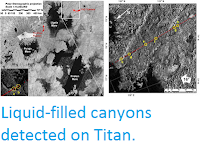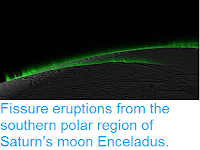The planet Saturn will reach Solar Conjunction (i.e. be directly on
the other side of the
Sun from the Earth) at 9.12 pm GMT on Thursday 21 December 2017. This
means that it will be at its furthest from the Earth this year,
about 11.05 AU (11.05 times the average distance between the Earth and
the
Sun, or about 1 653 000 km), and while not completely obscured by the Sun, due to differences in the tilts of the orbits of Earth and Saturn, it will be close enough to the Sun to be invisible for several weeks.
The relative positions of Saturn and Earth at Solar Conjunction (not to scale). Bob's Spaces.
Uranus orbits the Sun at an average distance of 9.58 AU, completing one
orbit around the Sun every 29.5 years. This means that the planet is
almost stationary compared to the faster moving Earth, so that it
reaches Solar Conjunction only twelve days earlier each year than the year
before, and reaches opposition (when it is directly opposite the Sun
seen from the Earth), roughly six months later.
See also...
Follow Sciency Thoughts on Facebook.







